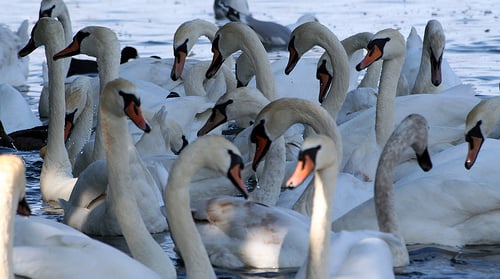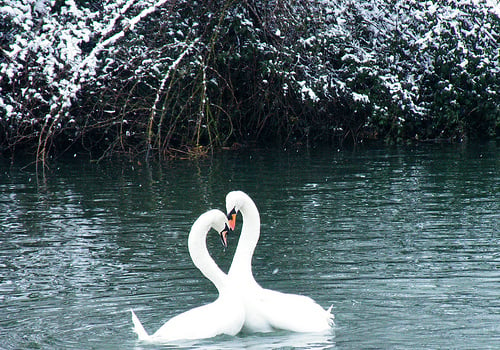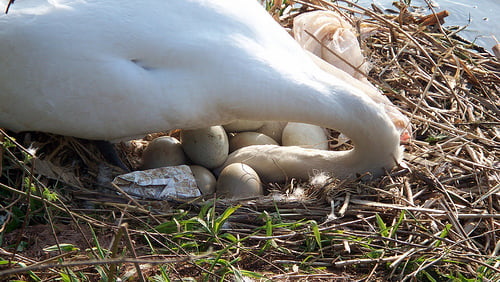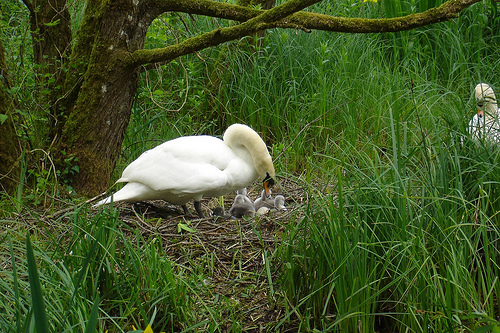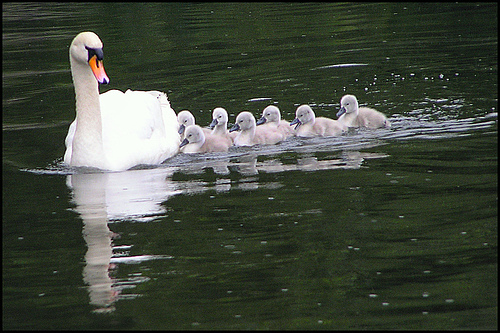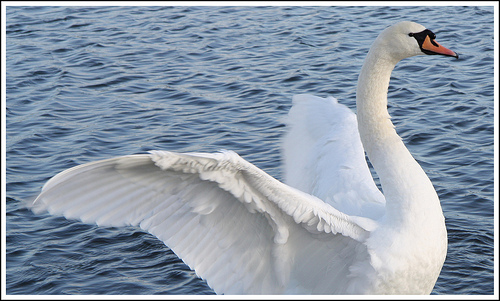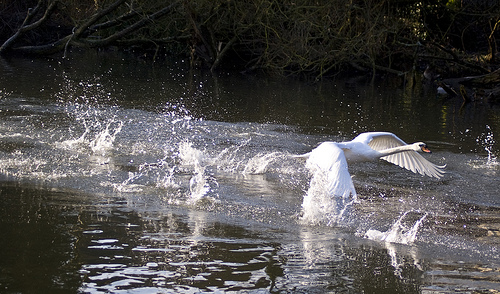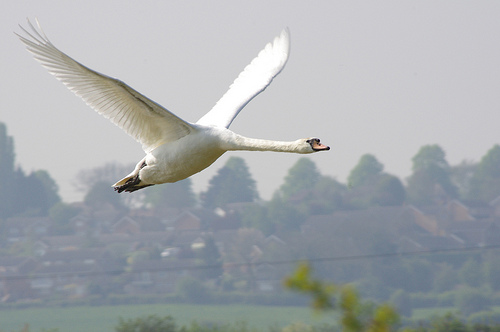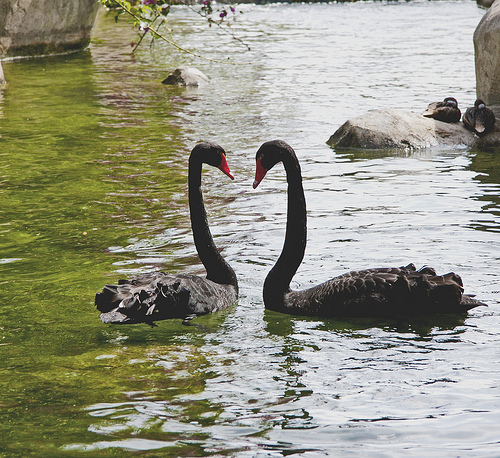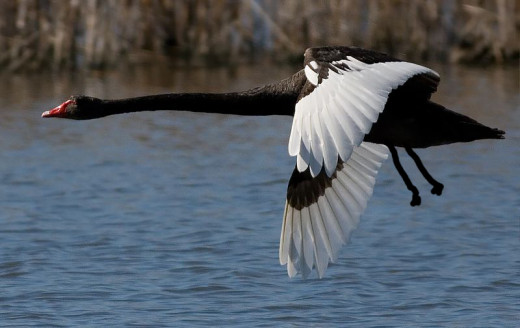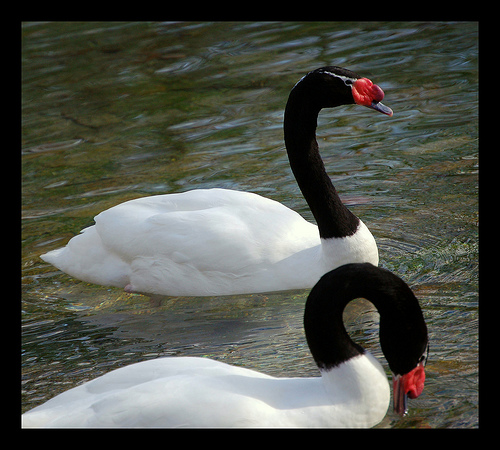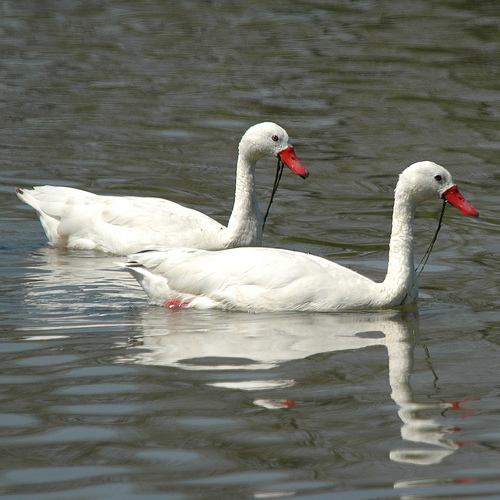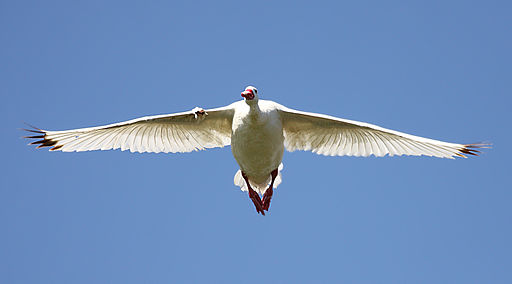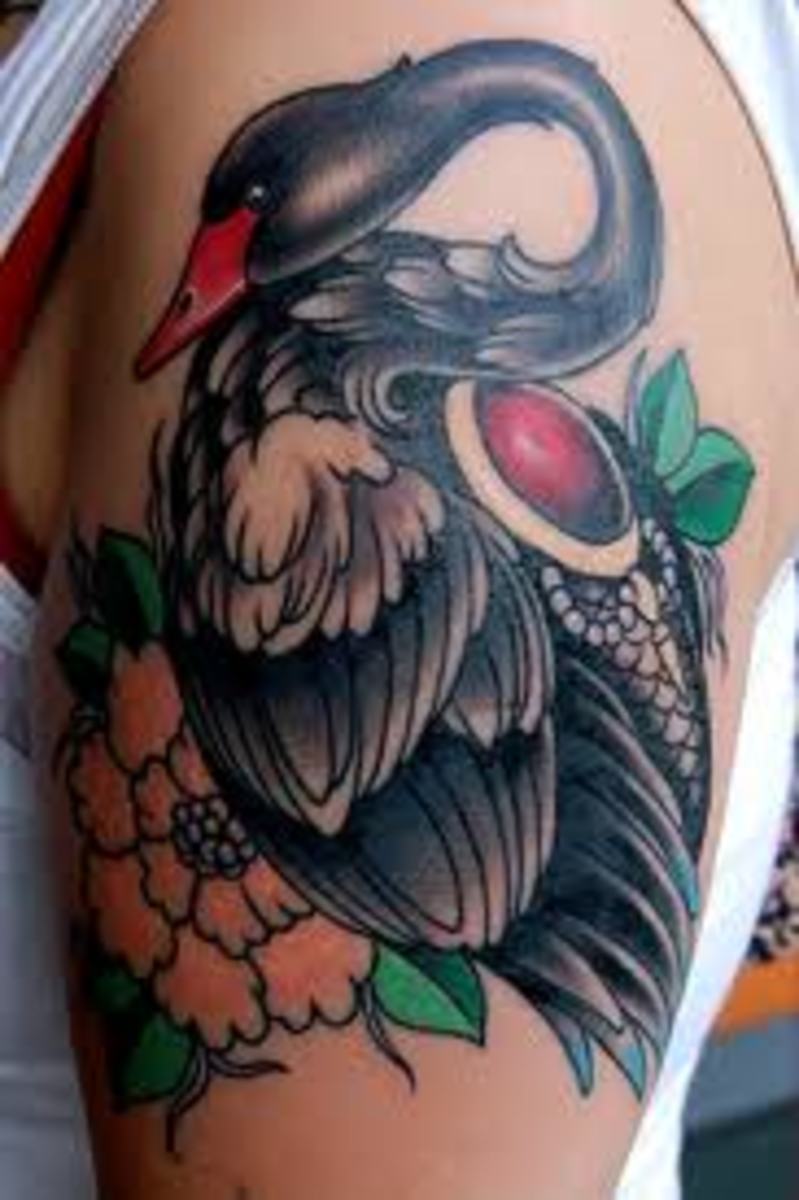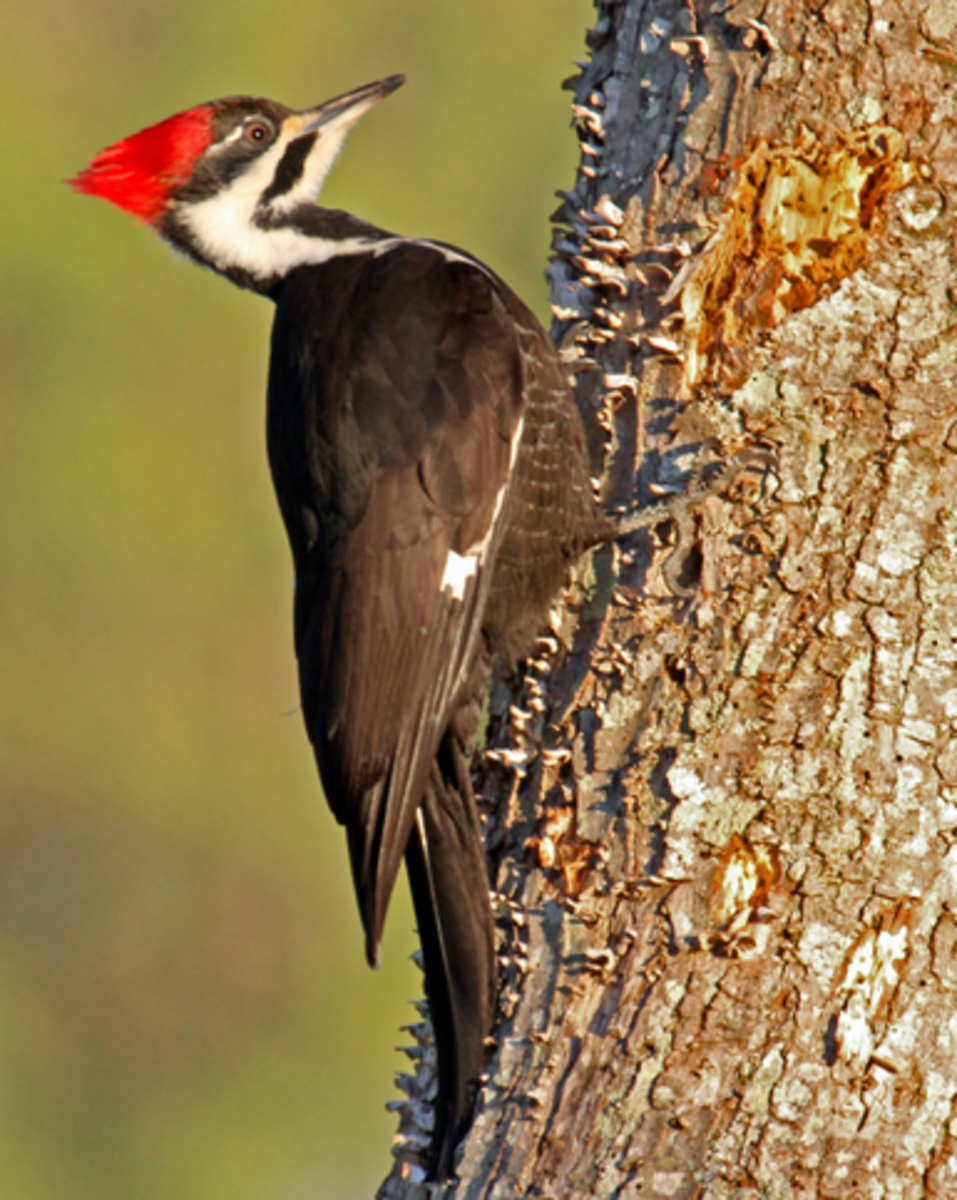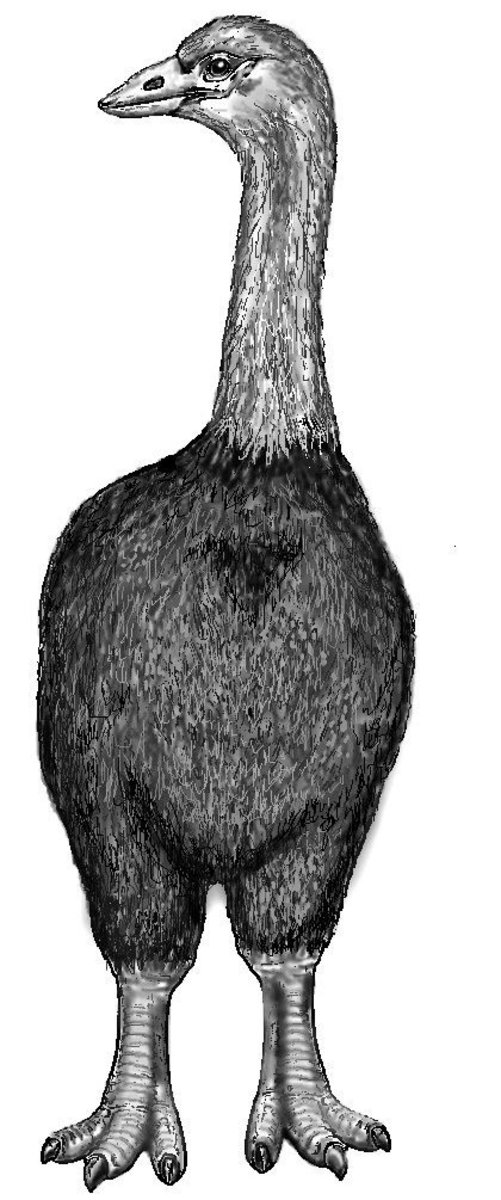Characteristics of Different Species of Swans with Pictures
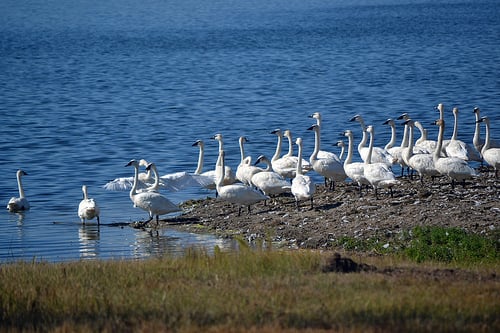
A swan is a graceful bird with a lovely body structure and color that is often regarded as the symbol of love. Swans keep a long-lasting relationship of love with their mates and so have been treated as the messengers of love in many folklore and stories. They are said to be aggressive too, when someone pester their nests or enter their territories. These birds are often imported to aviaries, zoos, botanical gardens and estates around the world.
Swans belong to the waterfowl family Anatidae within the genus Cygnus. Geese and ducks are the close relatives of swans wherein some of the similar looking geese and swans are considered a distinct subfamily, Cygninae. There are six or seven species of swan in the genus Cygnus. Swans love and then mate for a longer lifespan followed by nesting and hatching of eggs. Each clutch consists of eggs ranging from three to eight.
Species
The swans have their habitat generally in temperate climates, rarely surviving in the tropics. A group of swans is called a bevy or a wedge in flight. Northern Hemisphere has four (or five) species, Australia and New Zealand give life to another one species and the last one is distributed in Southern South America. These are migratory birds.
Let’s have a look at the characteristics of these individual species;
Do you know?
1. The largest species of swans can be more than 1.5 m (60 inches) long and weigh over 15 kg (33 pounds).
2. They have a wingspan of about 3m (10 ft).
3. Compared to the closely related geese, they are much larger in size and have proportionally larger feet and necks.
4. The adults have an unfeathered patch of skin between the eyes and bill.
5. Males are generally bigger and heavier than females.
1.Mute Swan (Cygnus olor)
Native to Europe and Asia, this species was introduced to North America and to some other continents. As its name, mute swan’s voice is too low when compared to other species of swan. With a commanding size and length, this large swan is wholly white in plumage with an orange bill bordered by black. It is identified by its pronounced knob atop the bill. It’s neck tends to be curved in straight posture.
Mute swans are monogamous by nature and nest on large mounds that they build with waterside vegetation on the edge or banks of rivers. Male and female swans share the caring of nest and once the cygnets are fledged, the whole family starts searching for food. They feed on a wide range of vegetation such as submerged aquatic plants and seeds which they catch with their long necks and nails.
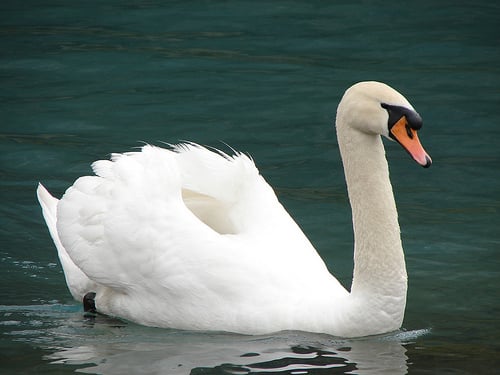
2. Trumpeter Swan (Cygnus buccinators)
The Trumpeter Swan is the heaviest species of swans, native to North America. It is the North American counterpart and a close relative of the Whooper Swan of Eurasia. The adult trumpeter swan is all white in plumage and has upright posture with a straight neck. It can be recognized with its large, wedge-shaped black bill. Rare cases are minimally lined with salmon-pink coloration around the mouth. Trumpeters are usually found in pristine wetlands away from human disturbance. It has a French horn like sound during its flight like its name.
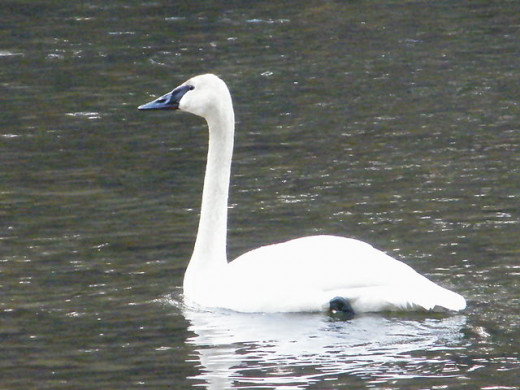
3. Whooper Swan (Cygnus cygnus)
These Eurasian swans, a counterpart of trumpeter swans are higher fliers despite their large size. It has a more angular head shape and a more variable bill pattern of yellow and black akin to the Bewick’s swan species. Whooper swans spend most of their time in water as their legs can’t bear their extensive weight while on land, especially during their growing period.
Whooper swans have a deep honking call and can migrate hundreds or even thousands of miles to their wintering sites in Southern Europe and Eastern Asia. Much admired in Europe, Whooper swan is the National bird of Finland and is featured on the Finnish 1 euro coin.
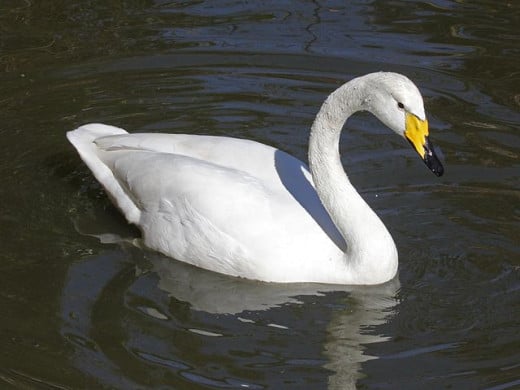
4.Tundra Swan (Cygnus columbianus)
This species is small, belonging to the Holarctic. They are sometimes divided into two subspecies depending upon the taxa, Bewick’s Swan (Cygnus Bewickii ) of the Palaearctic and the Whistling Swan (Cygnus columbianus) proper, of the Nearctic.
a. Bewick’s Swan
Bewick's swans are the smaller subspecies. Eastern birds are slightly larger when compared to the Western due to the size cline. Bewick's Swan is similar in appearance to the Whooper Swan, but is smaller, shorter-necked, round shape headed with variable bill pattern of more black than yellow. Whooper swans have a bill that has more yellow than black. The call of this bird is a low and soft ringing bark ‘bow-wow’.
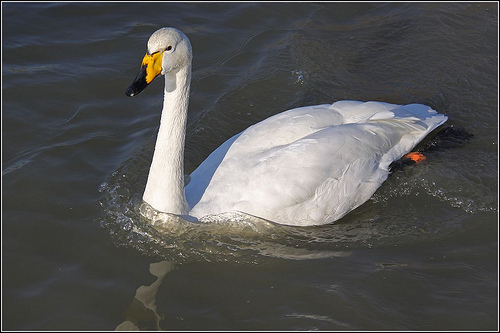
b. Whistling Swan
This subspecies is the smallest of the Holarctic swans. In adult birds, the plumage is entirely white with black feet and a bill that is mostly black with a thin salmon-pink streak running along the mouth-line. The iris is dark brown. A golden or rusty hue is spotted in the head and neck of birds that live in waters containing large amounts of iron ions. Unlike its name, whistling swan produces a markedly high-pitched bark ‘wow-wow-wow’.
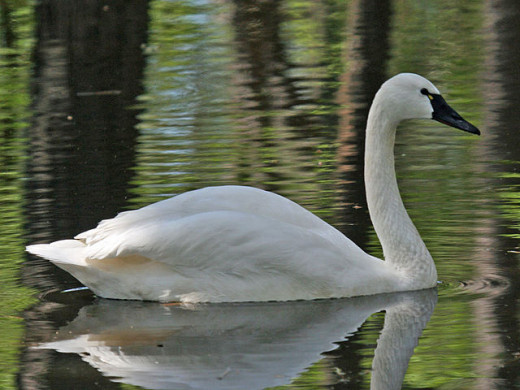
5. Black Swan (Cygnus atratus)
This large water bird breeds mainly in the Southeast and Southwest regions of Australia. Within Australia they are nomadic and migratory. Black Swans are monogamous breeders with mostly black plumage and bright red bills consisting of a white bar and a tip. But their flight feathers are white with legs and feet greyish black. Cygnets also are found to be of grey-brown with pale edged feathers.
The neck is long (relatively the longest neck among the swans) and curved in an ‘S’ shape. The black swan produces a tuneful, high frequency sound like a bugle on the water or in flight as well as a fine set of softer crooning notes. It can also whistle, especially when disturbed while breeding and nesting.
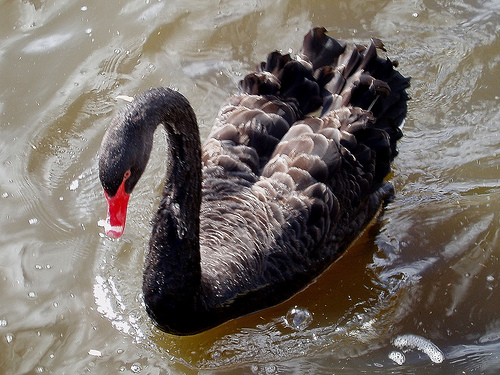
6.Black-Necked Swan (Cygnus melancoryphus)
This species is native to South America. Its body plumage is white with a black colored neck and head. The bill is greyish and has a red knob near its base with a white stripe behind the eye. The cygnet has a light grey plumage with black bill and feet. Marshes, lagoons and lakeshores are home to this color blended bird in southern South America. Black-necked swan is relatively silent. Unlike most wildfowl, both parents regularly carry the cygnets on their backs.
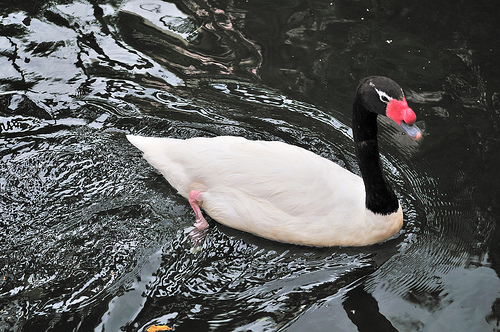
7. Coscoroba Swan (Coscoroba coscoroba)
Albeit its name is swan, it’s not always included in the family of swans by ornithologists. Coscoroba swans share some characteristics of the geese inhabiting Southern South America. It has a white plumage except for black tips to the outer six primary feathers, although this black is often barely visible on closed wings mode. In flight, the black wing tips are conspicuous. The bird has a red colored beak, legs and feet. The Coscoroba swan lacks the black mask that other swans have. This white and red combination makes it most beautiful amongst the family of swans, I perceive.
The cygnet is patchy colored with grey hue. The female incubates the eggs, while the male stands guard, aggressively protecting the fledglings against predators after hatching.
Some hate these birds of white plumage because of their obsessive and aggressive nature. But what makes me adore them is their character of bonding monogamously, despite being birds. They are the true symbols of love from whom we humans have to learn how to love our mates throughout the whole life.
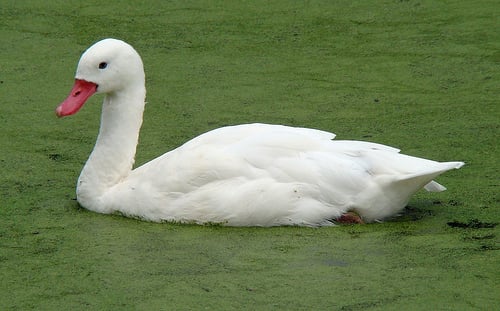
Swan pictures
Click thumbnail to view full-size













Please vote!
Do you like swans?
Swans in love dance
- The butterfly; life cycle, characteristics, symbolis...
The butterfly is an all time fascinating insect that speaks to us through its beauty. Watching the angelic butterflies flapping their wings in a garden is a refreshing sight. A butterfly is a day-flying insect of the order Lepidoptera. Some of them a - The peacock bird; pictures, characteristics, feather...
Peacock is the name of the male peafowl that belong to the Asiatic species of flying birds in the genus Pavo of the pheasant family, Phasianidae. This graceful bird's vibrant plumage is what makes it most beautiful among all the birds. The peacock is
© 2013 Radhika Sreekanth

